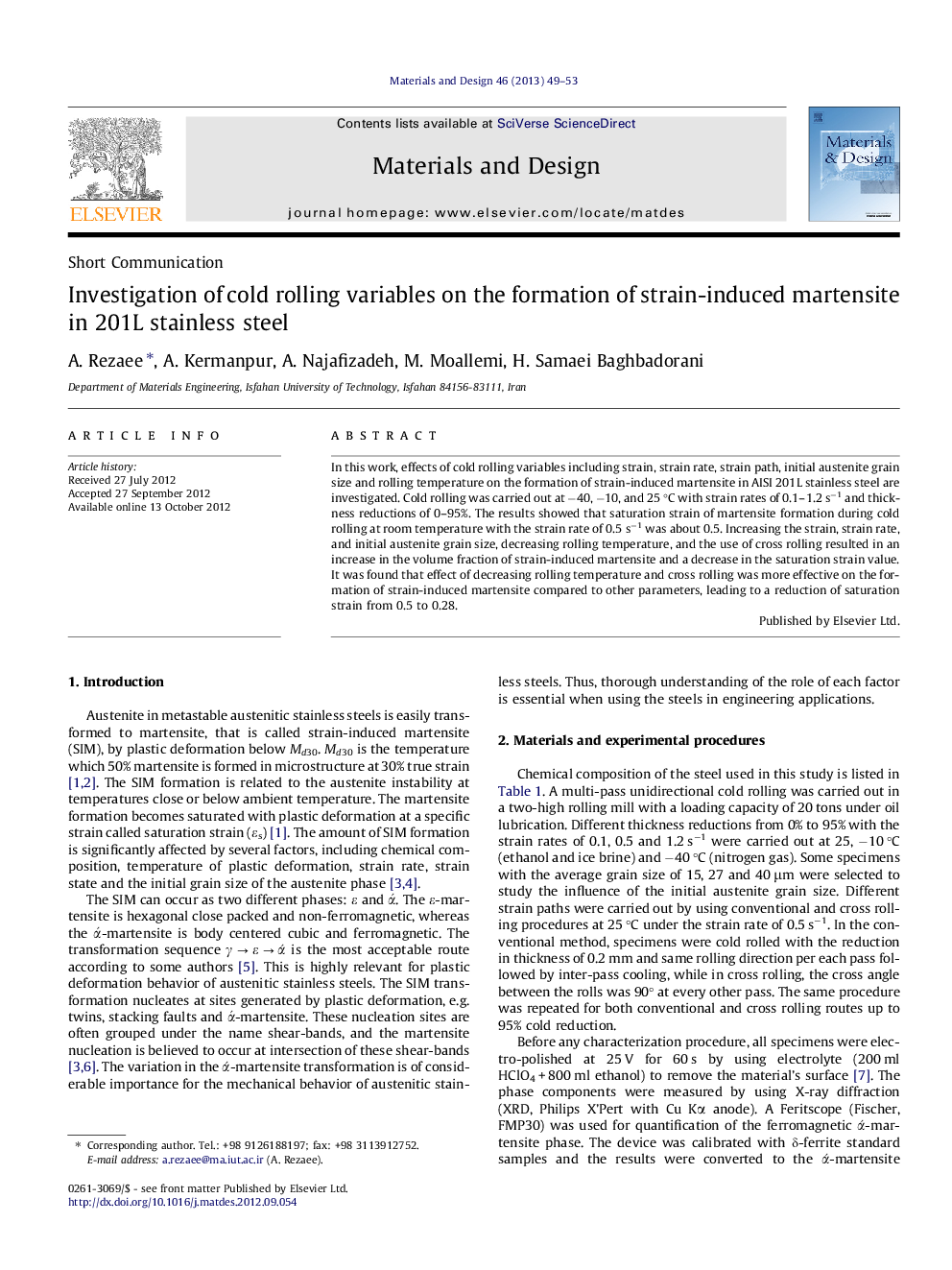| Article ID | Journal | Published Year | Pages | File Type |
|---|---|---|---|---|
| 830120 | Materials & Design (1980-2015) | 2013 | 5 Pages |
In this work, effects of cold rolling variables including strain, strain rate, strain path, initial austenite grain size and rolling temperature on the formation of strain-induced martensite in AISI 201L stainless steel are investigated. Cold rolling was carried out at −40, −10, and 25 °C with strain rates of 0.1–1.2 s−1 and thickness reductions of 0–95%. The results showed that saturation strain of martensite formation during cold rolling at room temperature with the strain rate of 0.5 s−1 was about 0.5. Increasing the strain, strain rate, and initial austenite grain size, decreasing rolling temperature, and the use of cross rolling resulted in an increase in the volume fraction of strain-induced martensite and a decrease in the saturation strain value. It was found that effect of decreasing rolling temperature and cross rolling was more effective on the formation of strain-induced martensite compared to other parameters, leading to a reduction of saturation strain from 0.5 to 0.28.
► Increasing strain, strain rate and initial austenite grain size reduced εs. ► Decreasing rolling temperature and the use of cross rolling reduced εs from 0.5 to 0.28. ► Rolling temperature and strain path was more effective on SIM than the other parameters.
